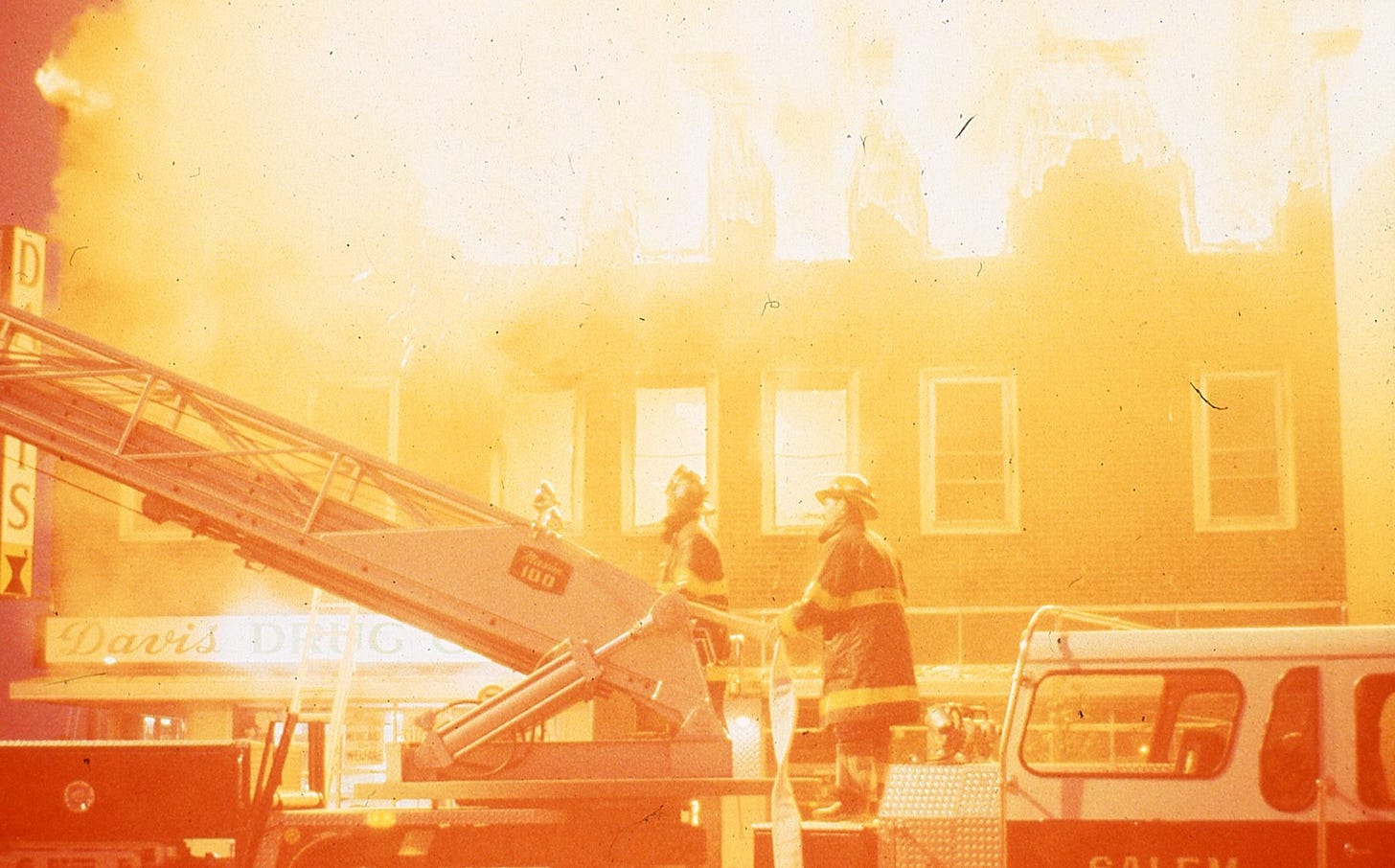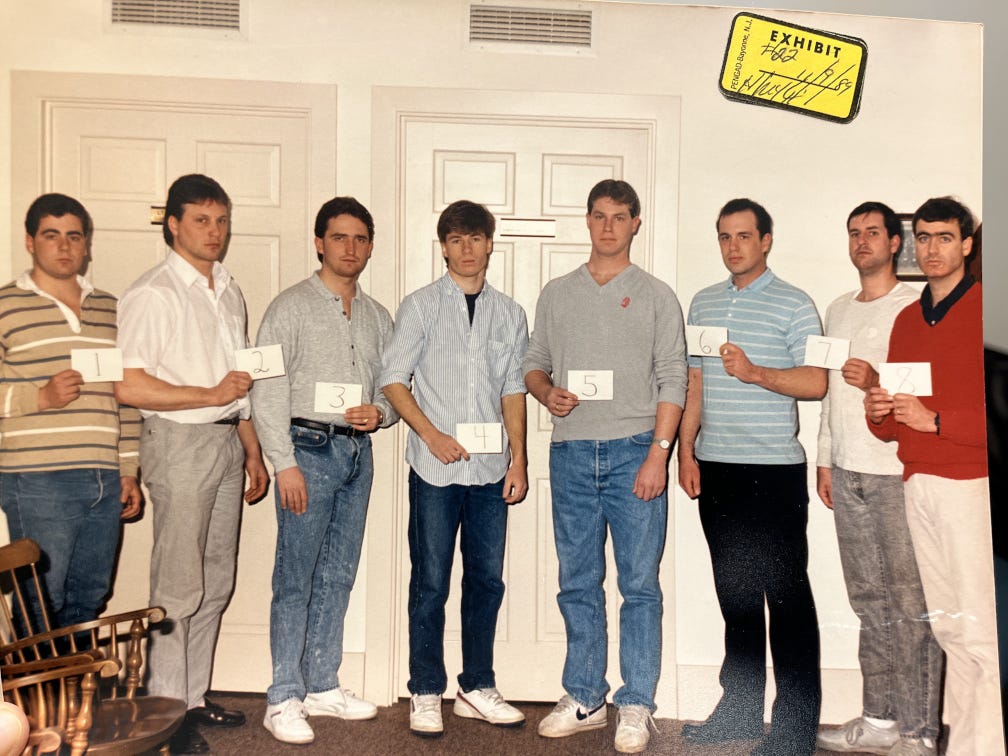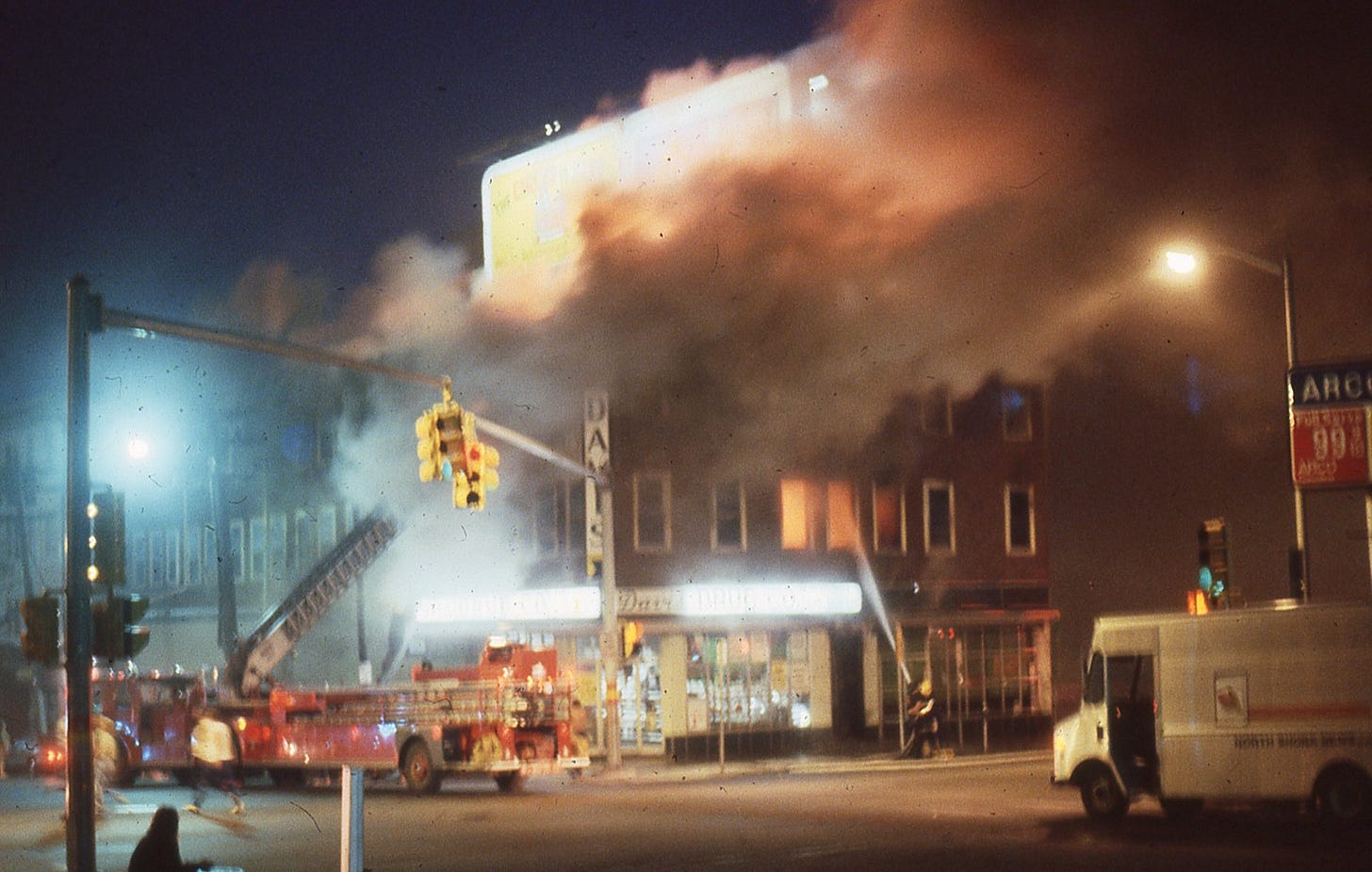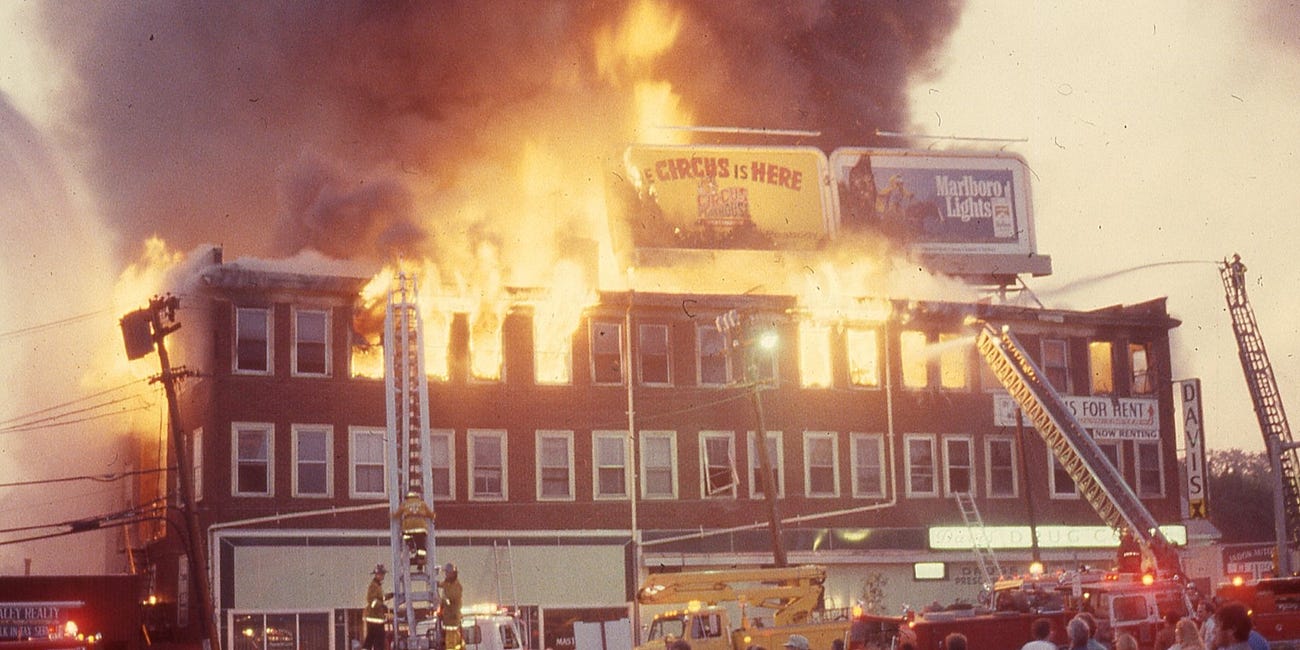Eyewitness ID of Man Serving Life for Deadly Fire Was Unreliable, Psychologist Testifies
James Carver was convicted of murdering 15 people after an eyewitness identified him in court — but decades later, a psychologist says the identification was scientifically unreliable

In 1989, James Carver was convicted of setting fire to the Elliott Chambers Rooming House in Beverly and murdering the 15 people who died in the horrific blaze. But the prosecutor who convicted Carver used scientifically unreliable eyewitness testimony to place him and his distinctive car at the scene, a psychologist testified in April.
For the past 34 years, Carver has maintained his innocence while serving two consecutive life sentences in state prison. During a five-day court hearing in April and May, his lawyers presented evidence that they say shows he was wrongfully convicted and is entitled to a new trial.

During the 1989 trial, a prosecutor for the Essex County District Attorney’s Office argued that Carver started the fire by burning a bundle of newspapers in the entrance to the rooming house because he was angry his ex-fiancee had dated a man who lived in the building. Carver’s parents testified that he was sleeping at home when the fire broke out, but the prosecutor used the cab driver’s testimony to dispute Carver’s alibi.
However, Carver’s lawyers argue that developments in the science of eyewitness memory prove that the cab driver’s description of the person and car he saw and his in-court identification of Carver were unreliable.
In Massachusetts, a judge “may grant a new trial at any time if it appears that justice may not have been done,” according to the state’s rules of criminal procedure. Lawyers must either present important evidence that was not available at the time of the original trial or show that the defendant’s trial lawyer was unusually ineffective.
On April 9, the first day of the recent hearing, Carver’s lawyers presented testimony from Nancy Franklin, a retired Stony Brook University psychology professor and eyewitness-memory expert. Franklin reviewed police reports and trial transcripts for Carver’s legal team and prepared a report about her findings before the hearing.
“My assessment is that … applying the standards of the field that arise from the research, I did not see any identifications of Mr. Carver or his car that I would consider reliable,” Franklin testified.

The cab driver testified that he stopped at a red light outside the Elliott Chambers shortly before the fire and saw Carver standing near the entrance. The cab driver also testified that he saw a car similar to Carver’s blue 1974 Mercury Cougar parked near the building.
“I’m sure this is the guy,” the cab driver recalled saying after selecting Carver from a photo array, a set of pictures used in the place of a traditional police lineup.
But Franklin testified that the cab driver’s account of what he saw changed and grew more detailed over time and that he selected Carver from the photo array after selecting someone else who was not a suspect.
The cab driver’s “ultimate confident identification in court was … the artificial product of the post-event suggestive influences that he was exposed to” by investigators, Franklin said.
The district attorney’s office has argued in court documents that Carver is not entitled to a new trial because there’s still enough evidence to convict him even with the new scientific evidence. At the hearing, the district attorney’s office did not make an opening statement or present a memory expert of its own.
A spokesperson for the district attorney’s office did not respond to a request for comment.
Carver, who is now 60, has difficulty standing and requires a wheelchair to get around due to a 2005 surgery to remove a brain tumor, according to court documents.
The morning of the hearing, he was placed in a wheelchair van at Old Colony Correctional Center in Bridgewater, driven about 70 miles to the courthouse in Lawrence, and then wheeled to the defense table by a court officer.
He listened to the testimony with headphones because he is hard of hearing. His wrists and ankles were shackled throughout the proceedings.
During the first day, he listened intently, pressing his clasped hands to his face and resting his chin on his thumbs. But at times, he seemed lethargic. During at least two moments, he closed his eyes and one of his attorneys, Lisa Kavanaugh, put her hand on his back.
Kavanaugh is the director of the innocence program at the state’s public defender office, the Massachusetts Committee for Public Counsel Services. Carver is also represented by Charlotte Whitmore, a staff attorney at the Boston College Innocence Program.
The first day of hearing was attended by about 30 people, some of whom were law students from the BC clinic.
“It’s a relief to have a hearing actually happening,” Kavanaugh said during the lunch break.
Carver has been represented by Kavanaugh and Whitmore since 2019. They filed his motion for a new trial in March 2022, more than two years before the hearing.
The motion is Carver’s fifth attempt at overturning his conviction. However, it is the first attempt by his current legal team — and the first attempt to use scientific evidence to challenge the prosecution’s case.

“Mr. Carver has spent nearly 40 years in prison for a fire that he did not set,” Whitmore said during a brief opening statement.
Whitmore said the jury that convicted Carver was unaware of the modern research on eyewitness memory and that the science “would have been a real factor in the jury’s deliberations.”
Essex County Superior Court Judge Jeffrey Karp presided over the hearing. He listened attentively and took notes as Whitmore questioned Franklin about eyewitness-memory research that has been conducted in the more than 30 years since Carver was convicted.

“The most fundamental thing to know about human memory is that it’s not a video camera,” Franklin said.
“We only notice some subset of details during any situation,” she continued. “Only a subset of that makes it into memory in the first place and some of those details … may actually be wrong because we didn’t perceive accurately.”
After an event happens, she said, people immediately begin forgetting details and their memory continues to decay over time.
Memory also becomes contaminated because people make inferences about things they witnessed or learn new information from other sources, incorporate those details into memory, and have difficulty distinguishing them from the original memory, she said.
People have particular difficulty accurately identifying the faces of strangers, she said, not just because of the limitations of memory, but also because distinguishing the unique characteristics of one stranger’s face from another is inherently challenging.
“We are very good at identifying our … mother, people who are very familiar to us,” Franklin testified. “With strangers’ faces, [it’s] entirely different. People are quite poor at it even if they have lots and lots of time, even under sort of optimized circumstances.”
She said the difficulty of remembering and identifying strangers’ faces isn’t intuitive for jurors.
Unreliable eyewitness identifications were the biggest contributing factor to wrongful convictions that have been overturned due to DNA evidence, playing a role in the majority of such cases, she said.
James Gubitose, one of three attorneys representing the district attorney’s office, objected to parts of Franklin’s testimony, saying her discussion of the science was admissible but that Judge Karp should not consider her opinion about whether specific witnesses were reliable.

Investigative journalism like this takes a ton of time, energy, and care. Please consider signing up for a paid subscription to The Mass Dump newsletter below, becoming a Patreon supporter, or sending a tip via PayPal or Venmo to make more work like this possible.
“You’re Talking Yourself Into It”
Franklin testified that research shows when people attempt to identify a stranger’s face a week after seeing it, “they’re already at high risk of making a misidentification,” and the rate of misidentification jumps to 90 percent after three weeks.
Law enforcement did not interview the cab driver until nine days after the July 4, 1984 Elliott Chambers fire and did not administer a photo array until about seven weeks after the fire, according to police records.
In the cab driver’s first statement to police, he said he drove by the Elliott Chambers in his taxi around 4 AM, according to police records. He said that he saw two older men standing by the mailbox in front of the building and a younger man standing to the right of the entrance, and he provided descriptions of all three men, the records say.
The cab driver would identify the younger man as Carver in court five years later — during both Carver’s March 1989 trial, which ended in a mistrial, and his November 1989 trial, which ended in a conviction.

On August 21, 1984, the cab driver viewed a photo array, which was administered by the Los Angeles County Sheriff’s Department because he lived in California at the time. The cab driver viewed headshots of nine white men from Massachusetts, one of whom was Carver.
Eventually, the cab driver picked a photo of a different man, police records say.
The man the cab driver selected was not a suspect — he was a “filler,” a person who bears some resemblance to the suspect and is included in a photo array or lineup to avoid steering the witness to a specific person.
At some point after that, the cab driver picked Carver’s photo and said, “It’s one of these two here,” according to the records.

At some point after selecting the two photos, the cab driver said that Carver was the person he saw outside the Elliott Chambers but that the filler’s hair more closely resembled the hair of the person he saw, the records say.
The cab driver recalled spending about 20 minutes looking over the photos before he picked the two, according to his April 1988 grand jury testimony.
“That [amount of time] reflects a highly unreliable identification of Mr. Carver and the process by which he came to that identification … is highly reflective of an unreliable ID,” Franklin testified. “Remember he started with it’s one of these two here, showing that he didn’t make a clear rapid identification of a single person.”
According to Franklin, eyewitness identifications are only reliable when they happen within seconds “because true face recognition is automatic and effortless and immediate.”
“If you’re taking time to do it, you’re doing something other than genuine face recognition,” she said. “You’re narrowing down. You’re talking yourself into it. You’re becoming more familiar with this face in front of you.”
Before deputies showed the photos to the cab driver, they gave him instructions that said, “Please do not discuss the case with other witnesses nor indicate in any way that you have identified anyone.”
According to Franklin, instructions like this are biased because they imply that the witness will identify someone even though it’s possible the person they saw is not included in the photo array or lineup.
“What we know from research is that that particular instruction would prime him toward making an identification,” she said. “He would be inclined to lower his decision threshold … and he would be more likely to make an identification, including a misidentification.”
“A Witness Who Continued to Have Trouble”
After the cab driver viewed the photo array in California, investigators in Massachusetts showed him the same set of pictures two more times and then showed him an in-person lineup.
The repeated identification procedures were problematic because of what researchers call the “mugshot-exposure effect,” according to Franklin.
“Any identification procedure involving [the] same witness and [the] same suspect in the future is at high risk of the suspect looking familiar,” Franklin said.
“People become more inclined to pick that person as the number of procedures increase,” she continued. “With that second ID procedure, the misidentification rates double for the innocent suspect. They … close to triple if the witness had in some way selected that innocent suspect in the prior procedure.”
Franklin said that researchers only put stock in the results of the first identification procedure involving the same witness and suspect and that only one procedure should be administered to avoid contaminating the witness’s memory.
The additional identification procedures were also problematic because they were not “blind” procedures, meaning the investigators who administered them knew Carver was the suspect, Franklin said.
“Research … has shown an enormous number of even very subtle ways that [a non-blind administrator] can behave to influence the outcome,” she said.
“So for example, the … administrator notices the witness looking at the suspect, and the administrator looks expectantly at the witness,” she continued. “Or if the witness is considering a different person, the administrator might say, Take your time. … They may say something more overt.”
She said that research has shown non-blind administrators often exhibit suggestive behaviors without realizing it.
When investigators conducted the second photo array in November 1987, the cab driver again picked out the photos of Carver and the filler and then said that Carver was the person he saw outside the Elliott Chambers, according to police records.
During the third array in January 1988, the cab driver picked out both photos and “said that he had trouble with these two photographs in the California array,” police records say. He then selected the filler as the person he saw, the records say.
“This is not a clear definitive identification of a single person,” Franklin said. “This is a witness who continued to have trouble. I think that phrase is well put.”
Investigators conducted a lineup at the Danvers Police Station in April 1988, nearly four years after the fire. They included Carver in the lineup but not the filler, which “spared [the cab driver] the struggling between those two,” Franklin said.

The cab driver selected Carver from the lineup and said, “I think that looks like the guy,” according to police records. The cab driver asked Carver to step forward, and then said, “That’s him,” the records say. After the lineup, the cab driver commented “that he could never forget that guy’s lips,” the records say.
Franklin said the cab driver’s comment about Carver’s lips was significant because there are no records indicating he mentioned them before the lineup.
Research shows people notice and remember distinctive features of faces, Franklin said.
“They comment on them,” she said. “They will be in the description to police.”
If a person doesn’t mention a distinctive feature in their first interview with police and mentions it later, “that’s a red flag that the characteristic entered the person’s memory post-event,” she said.
“[Lips are] something that would have been difficult to perceive in the original event, something [the cab driver had] been exposed to multiple times in the photos,” she said. “So this actually is a signal that he may be looking to identify Mr. Carver against not the original event, but the photos.”
“Intruded Into Memory”
In the cab driver’s initial statement to police, he said the man he saw was in his mid-twenties, was about five feet and 11 inches tall, had dirty black hair and a growth of beard, and was wearing dark clothes, including a T-shirt with white lettering that possibly said “Make it in Massachusetts,” the records say.
But about a week after Carver provided police with the clothing he said he was wearing the morning of the fire, which included a pair of denim overalls, the cab driver met with investigators again, police records show. That time, the cab driver told police the man he saw had been wearing overalls, making it impossible to read the text on his shirt, the records say.
Franklin said it was significant that the cab driver mentioned overalls only after police learned that Carver, who they suspected of setting the fire, had been wearing overalls the morning of the blaze.
“It raises a concern that that detail came in post-event,” Franklin testified. “[It’s] unclear how. It could have easily been intruded into memory simply from a question. Was the guy you saw wearing overalls?”

Before the cab driver viewed the lineup in 1988, the trial prosecutor gave him a page with written instructions. The document told him to say whether any of the men in the lineup were “the man [he] saw standing outside of the Elliott Chambers … wearing bib overalls,” records show.
“That’s suggestive,” Franklin said. “It sort of bolsters the idea that the man … had been wearing bib overalls and it makes [the cab driver] more likely to report that when he testifies.”
Franklin also said that it’s unlikely the cab driver could have observed all the details he initially reported to police due to distance, poor lighting conditions, and a brief exposure to the people he reported seeing. It’s also unlikely that he would remember so many details nine days later, she said.
It was around 4 AM when the cab driver passed the Elliott Chambers, and the area was lit by streetlights and storefront signs, according to his testimony.
“Those observation conditions were highly, highly impoverished,” Franklin said.

Franklin was cross-examined by assistant district attorney Caitlin Shugrue, who tried to show that the jurors who convicted Carver were aware of many of the problems with the cab driver’s identification because he had been questioned about them by Carver’s trial attorney.
At one point, Shugrue asked whether people understood that lighting conditions affected the reliability of eyewitness identifications in 1989.
Franklin said they did in a general sense but that a scientific understanding of the risk of a misidentification couldn’t be presented to jurors at the time. She said that a “seminal paper” written years after Carver was convicted used lux, a measurement of illumination, to quantify the risk.
Franklin said she estimated that there were “two to three lux in illumination” outside the Elliott Chambers, “which is about a tenth of the level of illumination that’s associated with reliable identification.”
“And how are you able to make that assessment when you in fact were not on scene to see the lighting itself?” Shugrue asked.
Franklin said she used a chart in the paper she cited.
“I’m … basing my decision on [the cab driver]’s description, which may not even rise to the level of moderately lit,” Franklin said. “I’m sort of giving it the benefit of the doubt.”
Shugrue asked whether the cab driver testified that the area was “well lit,” and Franklin said she couldn’t remember his exact words.
“If you’d like, I can refresh your recollection,” Shugrue said.
“You just have,” Franklin responded.
Franklin then attempted to say something about the lighting conditions described by the cab driver, but Shugrue interrupted and said she had no more questions.
“The Cars Were Only Blue and Green”
In addition to providing descriptions of three men, the cab driver initially told the police he saw a blue car and a green car parked in front of a construction site next to the Elliott Chambers, police records say. The records do not say that the cab driver described the make or model of either car or mentioned any distinctive details about them.
But police, who knew that Carver drove a blue Mercury Cougar, interviewed the cab driver again three days after his first interview. During the second interview, he said that the blue car was either a Cougar or Ford Torino, police records say.
According to Franklin, research has also shown that people are prone to misidentifying cars, just like they are prone to misidentifying faces.
She described a study in which participants witnessed a simulated crime scene involving a black sedan. The participants were then shown a different black sedan and asked whether it was the one they had seen, she said.
“The right answer is no, but … a little more than 60 percent actually misidentified that car,” she said.
“It’s a mass-produced object,” she continued. “There … are other mass-produced objects that are similar. People have trouble telling them apart, and so they’re inclined under those circumstances to go ahead and find a match even though one isn’t actually there.”
The day of the cab driver’s second police interview, investigators brought him to the Beverly Hospital parking lot, where they knew Carver’s Cougar was located at the time, according to police records.
Franklin said this identification procedure was not reliable because the cab driver was shown the random assortment of cars in the parking lot rather than a group of cars that looked similar to one another.
At the hospital, the cab driver pointed out Carver’s Cougar but said the color was lighter than the car he saw, police records say. A State Police investigator asked the cab driver whether the color difference could be explained by the lighting conditions outside the Elliott Chambers, which the driver said was possible, the records say.
Franklin testified that the cab driver’s comment that the car’s color was different showed that the “procedure … resulted in a non-identification of Mr. Carver’s car.” The investigator’s comment about the color possibly being affected by the lighting, she said, was “highly suggestive negative feedback.”
The cab driver testified that he looked at the Cougar for three to four minutes, which Franklin said was a long time to make an identification.
The cab driver also testified that the blue car he saw outside the Elliott Chambers had two features that other witnesses said Carver’s Cougar possessed: damage to the front grill and mag wheels, which are distinctive spoked wheels popular with car enthusiasts.
“The only reason I noticed the car was I noticed it had mag wheels on it,” the cab driver testified.
However, the State Police investigator testified that the cab driver didn’t mention mag wheels or grill damage until 1987, about three years after the fire.
The cab driver testified that when police took him to the hospital parking lot, he only viewed Carver’s Cougar from behind and didn’t check it for these features.
“He, over the course of time, added several distinctive characteristics that would help uniquely identify this car when in his initial … very detailed description that he gave police, the cars were only blue and green,” Franklin said.
This story is the first part of a series about the James Carver hearing. I’ll be publishing several follow-up stories in the near future. The next piece will focus on testimony about developments in the science of fire, which Carver’s lawyers say show that the Elliott Chambers blaze might not have been caused by arson in the first place.
Again, if you’d like to keep The Mass Dump running, please consider offering your financial support, either by signing up for a paid subscription to this newsletter below, becoming a Patreon supporter, or sending a tip via PayPal or Venmo. It takes a tremendous amount of work to bring you stories like this, and I rely on your support to keep doing it.
Even if you can’t afford a paid sub, please sign up for a free one to get updates about this story, and please share this story on social media.
You can follow me on Facebook, Twitter, Mastodon, and Bluesky. If you have any information about the Elliott Chambers fire or the James Carver case, please email me at aquemere0@gmail.com.
I published a lengthy story about the Carver case shortly before the hearing, which you can read here:
Science Proves Man Convicted of “Worst Mass Murder in Massachusetts History” Is Innocent, Lawyers Argue
James Carver is serving life in prison for a deadly fire but for decades has insisted he is innocent — and his lawyers say they have the scientific evidence to prove it
Anyway, thanks for reading. That’s all for now.



